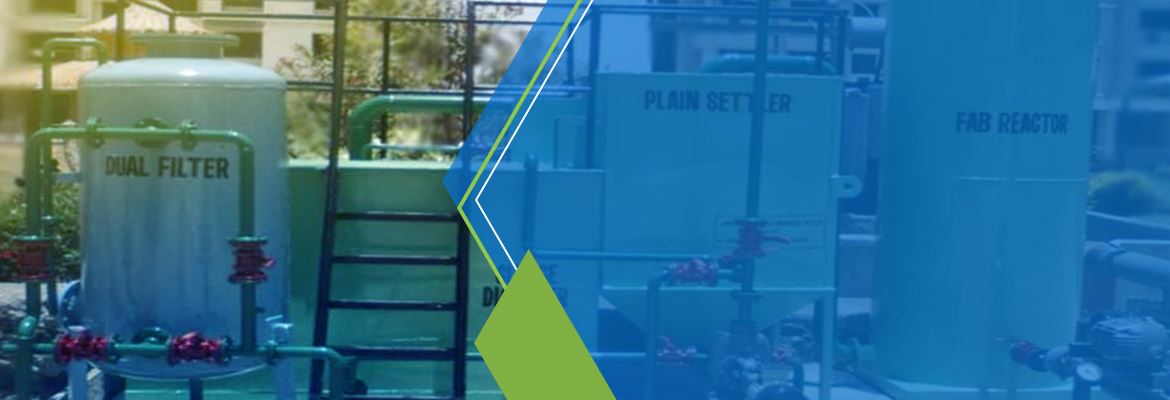Choosing an Effluent Treatment Plant (ETP)
Effluent treatment plants from Atkins Enviro Water Technologies are designed to treat both municipal and industrial effluent, which consists of wastewater, sludge or sewage. These effluent treatment plants are tailored to remove harmful pathogens, clear hazardous chemicals, detergents and toxins, and separate and extract valuable substances from effluent.
Factors to consider while choosing an ETP
Industrial undertakings those wish and are needed to install an ETP have to consider several factors. They include information and parameters (quality and quantity) of their wastewater that are discharged from their factory.This information can be derived by getting a sample of the effluent water tested and analyzed at an authorized laboratory.
Some of the factors to be considered while choosing an ETP are as follows:
-
Knowledge of law of the land (national and international rules and regulations) in regards to water and wastewater treatment that you have to comply with.
-
What quantity of effluent is produced in your entity on daily basis?
-
The chemical contents and their concentration in the effluent. For instance, 30m3/hour with COD of 500ppm, and pH of 11.5.
-
What is your budget for installing and running the ETP?
-
Can you spend on its maintenance once it is installed?
-
Do you have enough and suitable land area for the desired construction and installation?
-
Choosing the right vendor is one of the critical factors to consider. An expert in the filed who provides excellent aftersales service should be considered.
-
As there are many types to consider, choose the ETP that best suits your company requirements.
-
Better recruitment and training to the personnel responsible for operation and maintenance of the plant.
THE ANSWERS TO THE ABOVE QUESTIONS WILL ASSIST IN THE CHOICE OF BEST SUITED ETP FOR YOUR PREMISE.
Treatment Methods used by us for treating Effluent
Effluent can be treated in a numerous way depending on the level of treatment required. These levels are known as preliminary, primary, secondary and tertiary (or advanced). The mechanisms for treatment can be divided into three broad categories: physical, chemical and biological, which all include a number of different processes (Table 3). Many of these processes will be used together in a single treatment plant. Descriptions of the most commonly used processes are given here.
Wastewater Treatment Levels and Processes
| Treatment level | Description | Process |
|---|---|---|
| Preliminary | Removal of visible bigger solids that maydamage equipment or result in operational problems. | Physical |
| Primary | Designed to remove large debris and solids or settleable materials such as suspended solids and organic matter from the water. | Physical and chemical |
| Secondary | Involves aerating the wastewater. The water is aerated (or shaken up) to release dissolved gases such as hydrogen sulfide. Aeration also replenishes oxygen, which is consumed by decaying organic matter found in wastewater. Removal of biodegradable organic matter and suspended solids. | Biological and chemical |
| Tertiary/advanced | Tertiary treatment may involve the use of chemicals to remove remaining nutrients (nitrogen and phosphorous). It may also include the use of filter beds or other types of treatment. Removal of residual suspended solids / dissolved solids. | Physical, chemical and biological |
Effluent treatment plant (ETP) in various industries
In a world of ever-shrinking resources, it has become imperative that industries use less and fewer resources (especially fresh water) and reduce their carbon imprints.
Atkins Enviro’s Effluent (treated industrial wastewater) treatment plant has exponentially grown in significance, as its ETP treats the wastewater coming from various industries like:
-
Food and processing industries
-
Pharmaceutical industry
-
Tannery & Paper industries
-
Textile and dye industry
-
Dairy and Beverage industries
-
Paint Industry
-
Chemical Industries
The list is indicative, not exhaustive as there can be applications in other industries as well.
Atkins Enviro’s ETP purifies wastewater for its reuse and releases safe water into the environment. Atkins Enviro’s ETP uses physical, chemical, biological, and membrane processes to treat the effluent. Each industry has a different type of wastewater;thus the process has to be customised for the client’s needs.





 Web Mail : Info@atkinsindia.com
Web Mail : Info@atkinsindia.com Customer Care Number : +91 9992227788
Customer Care Number : +91 9992227788 Web Link : www.atkinsindia.com
Web Link : www.atkinsindia.com













